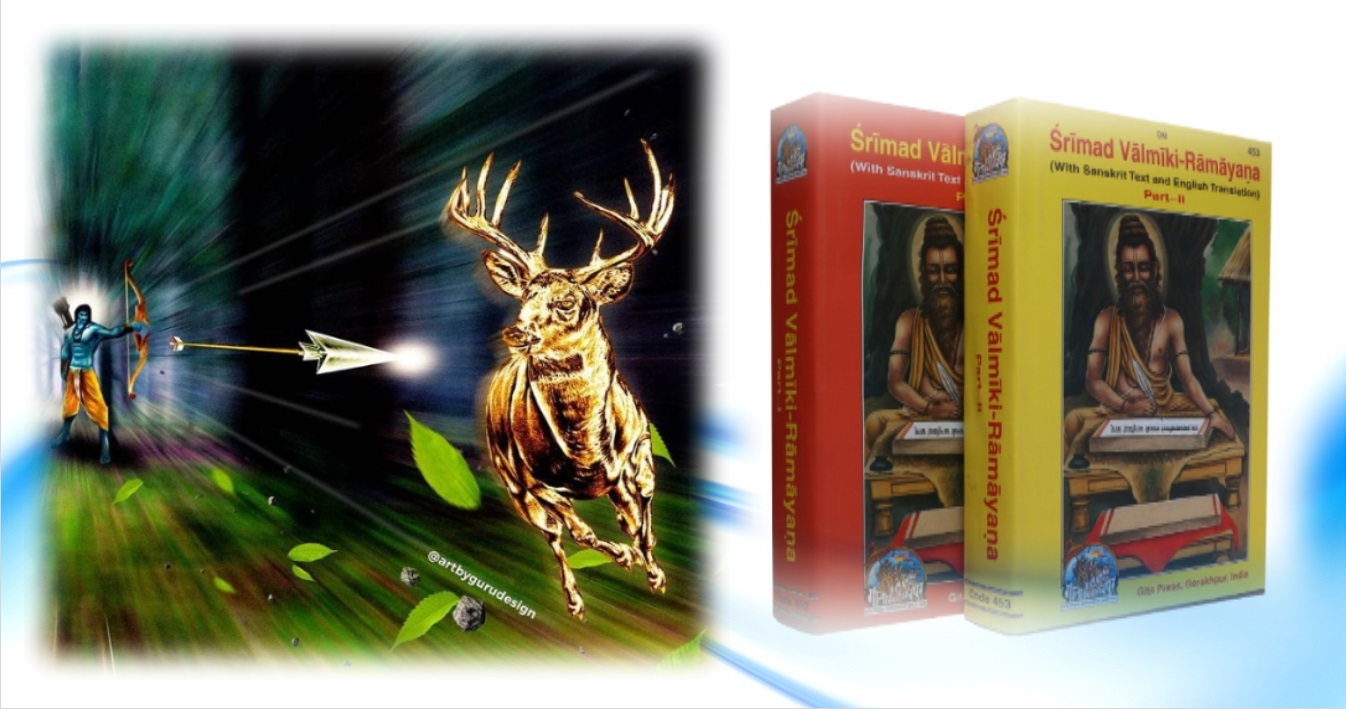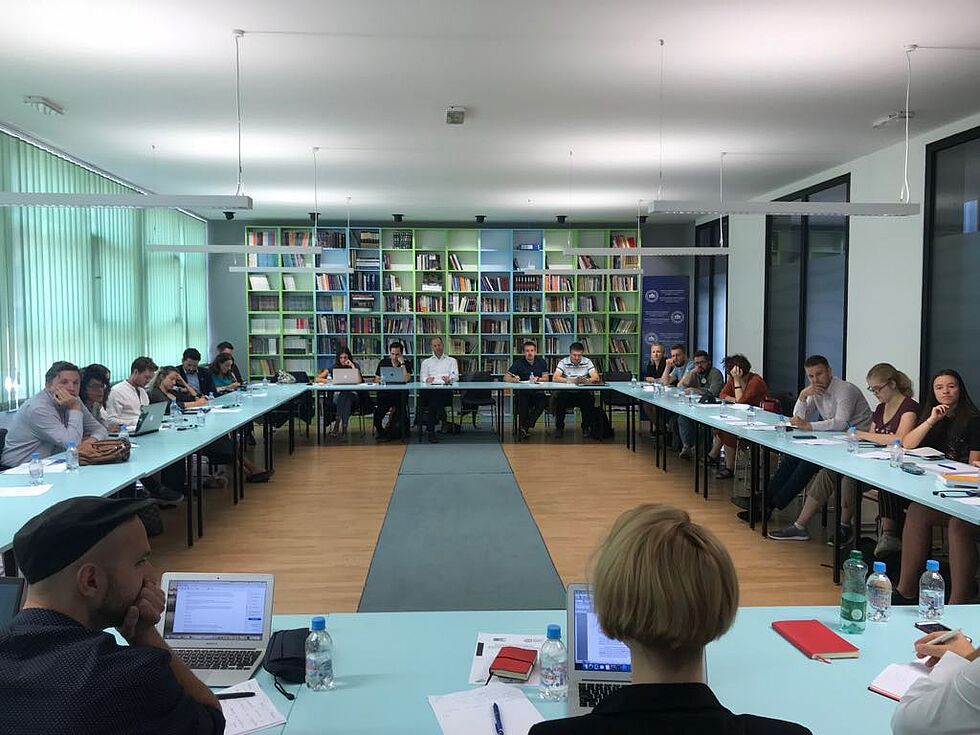- Visitor:78
- Published on:
The Hidden Jewels of Goa – Goa Beyond Beaches
The real Goa is a true kaleidoscope of legends, colours, ancient customs and traditions, attires, cuisines, festivals, history, and heritage.

Introduction
Goa brings to mind sunny beaches, blue waters – the party capital of India! And of a green verdant landscape dotted with pretty churches; the common perception is that Goa comprises only of BBC – Beaches, Bars and Churches! However, this perception is superficial, as will be evident to anyone venturing away from the overcrowded beaches. The real Goa is a true kaleidoscope of legends, colours, ancient customs and traditions, attires, cuisines, festivals, history, and heritage.
During my recent visit to Goa, I visited a number of magnificent temples, being unaware of their existence. This led me to dig into Goa’s past and what/who inhabited the region before the Portuguese. It was a fascinating read which spans millennia starting from the Neolithic Period, events of the Mahabharata era, having being a part of the Ashoka Empire, the Golden Age of the region under the Kadamba dynasty, mass conversions, destruction of temples and gory details of the Goa Inquisition under the Portuguese, Shivaji defeating the Portuguese leading to Hindu revival and kickstarting temple rebuilding activity. This article (Part I) delves into the history of Goa. Part II will describe the magnificent temples of Goa.
Goa down the Ages
Around 12,000 to 10,000 BCE, geological events in south west India are thought to have resulted in the elevation of the coastal area that encompasses Goa. Burnt shells and fossils in Goa’s soil confirm this upheaval. Coincidently, Vedic Itihaas also ties in with this geological event.

Migrants are believed to have populated the land, though discoveries in the hills of Goa’s east show that the area was inhabited for centuries before the agricultural, migrant settlers. Cave art in the area dates from around 100,000 BCE to 10,000 BCE and points to an ancient hunter-gatherer population.

Goa traces its history goes back to the waters of Mhadei (Mandovi), Zuari (Aghanashini), and Kushawati rivers where Goa’s pre-history flowered. The Sanguem and Sattari Talukas mirror Goa’s pre-historic antiquity. The petroglyphs of Pansaimal, Kazur, Pirla, Mauxi showcase Goa’s Stone Age (megalithic) rock art. Alongside these, Palaeolithic era caves exist. The earliest communities living in Goa were the Kunbis to which stock belong the other agriculturists – the Gawdas and the Velips; the fisher folk Kharwis or the Kols, and the Mhars are the other tribes. These tribes have a rich heritage of folk songs, dance, and music. Agriculture formed the basis of the earliest village communities called the Gaunkaris. ‘Santer’ and ‘Betal’ were the folk deities.
Around 600 BCE, a significant numbers of settlers are believed to have come to Goa from central India, and the area is referred to in the Mahabharata as Gopakapuri, or ‘Cowherd Country’. Bhisma parva of Mahabharata and Vishnu purana mention this land as Goparashtra. Sahyadri khand refers to it as Gorastra and Gomant. The region Aparanta that covers the western coast of India includes Goa. This name was mentioned in Mahabharata, Buddhist literature Baveru Jataka, Kalidas’ Raghuvamsatn, Vatsyayana’s Kamasutra and Kautilya’s Arthashastra. The Girnar inscription of Maurya Ashoka reveals that Aparanta was the border with the Arabian Sea. Goa is also called Gomanchal since the land is situated in hilly terrain. It is also mentioned as Gopakapattana – Pattana means port city in Sanskrit and Gopakapattana was the port city of the Kadambas. The Greek geographer Ptolemy (160 CE) mentioned it as Kouba. Arab traders and Persian writers mentioned Goa as Gouba. Arabian traveller Ibn Batuta (1325 CE) mentioned Goa as Sindabur, while 16th century traveller Ludovico de Varthema called Goa as Goga. Goa is also called Goem in Konkani and Govern in Marathi. The Portuguese called it Goa, probably as it was similar to Lisboa.
The dynastic history of Goa begins in the 4th century BCE with the Mauryas (322 to 185 BCE). Then followed the Satyavahanas, Chuttus, Western Kshatrapas, Kuras, Marathis, Ishvakus, Gurjara Pratiharas, Abhiras, Trikutas, Kalachuris, Nagas, Bhojas, Kaikeyas, Konkan & Kolhapur Shilaharas followed by the Kadambas (11th to mid-14th century CE) – whose period is called the “Golden age of Goa”. In between, for a brief period under the Mauryan empire, a Greek Buddhist missionary was sent to the region by Emperor Ashok. Buddhist settlers spread their religion, but after Ashok’s death in 232 BCE the empire crumbled, and Hinduism returned as the main religion. Invasions by the Delhi Sultans and the Honavar Nawab followed, as did the fallout of the enmity between the Vijayanagara empire (who ruled from the 14th to 15th century) and the Bahamanis. Adil Shah of Bijapur wrested control of Goa in 1498 CE and ruled till he was defeated by the Portuguese in 1510 CE. This Islamic period saw the start of Hindu conversions and temple destruction.
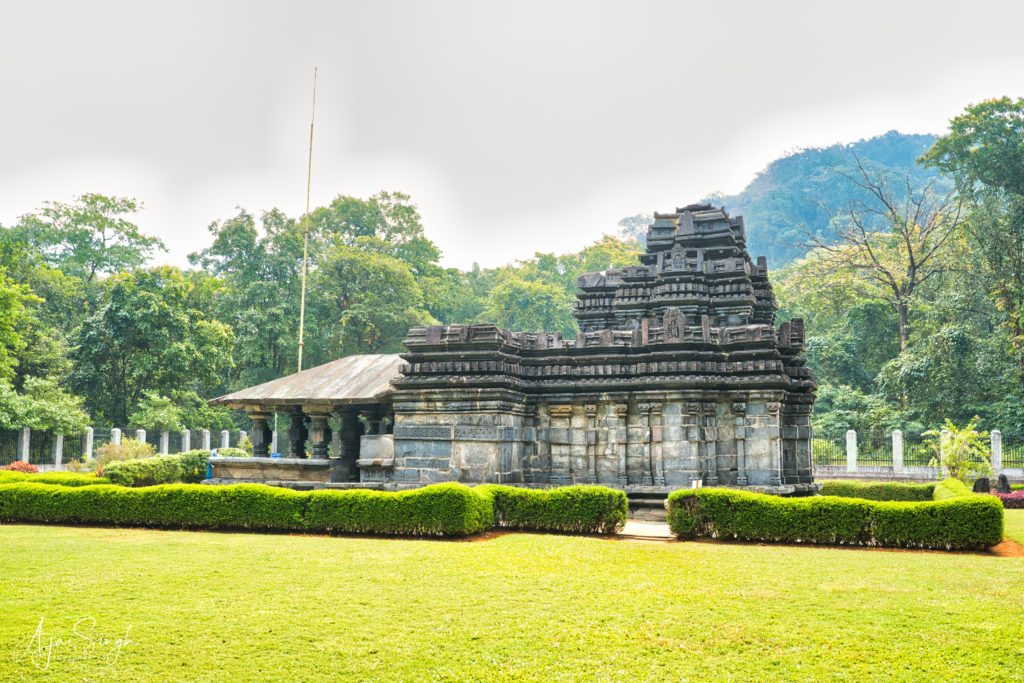
Konkani, the language spoken by Goans today is believed to have been created by the impact of the official language of the Mauryan Empire called Prakrit on the native language.
With the European powers seeking influence abroad in the 15th century, in 1498 Vasco Da Gama set sail from Lisbon for Calicut. His arrival there signalled the beginning of the western colonial period in Goa.
The sinking of a small Portuguese fleet between Mumbai and modern Goa by the Ottoman Turks and a fleet of Calicut vessels sparked a far greater naval conflict which took place at the Indus Delta, known as the Battle of Diu (1509 CE). The Portuguese and Muslim fleets knew that success would mean dominance over the Indian Ocean. The Portuguese won outright, and marked the occasion by firing the limbs of their prisoners at towns and villages as they sailed along the coast. Eleven years after Da Gama arrived, a permanent enclave was needed to administer trade. After bloody battles, the Portuguese finally captured the capital of Ela – it would remain under Portuguese rule for the next 450 years. In 1530, Goa replaced Cochin as the administrative capital not only of Portuguese India but the Estado da India, that is, all Portuguese colonies east of the Cape of Good Hope.

However, the Portuguese stronghold in India started declining from the 17th century, a process hastened by the Maratha Wars between 1664 to 1739. Forced to choose between the warring Marathas and Mughals, the Portuguese incurred the wrath of the Marathas by granting safe passage to the Mughals through Goa. This eventually led to seizing of Margao by the Marathas and signing a treaty which required Portugal to pay compensation in exchange for the withdrawal of Marathi troops from Goa.
In the 18th century, the territory of Goa comprised of two parts – the central nucleus of the Velhas Conquistas (Old Conquests) and the Novas Conquistas (New Conquests). In 1843, the Portuguese moved the capital to Panaji (Cidade da Nova Goa) from Velha Goa.
The Skanda Purana Itihaas
Shayadri Khanda of Skanda Purana (pt-II, ch.1) refers to the reclamation of parts of Goa from the sea by Parsurama, the 6th incarnation of Vishnu. He shot seven arrows from Shayadri towards the sea and reclaimed the land of trapezoid shape extending from Vaitarni to Kanyakumari. The region thus reclaimed goes by the name Parasurama kshetra. It is divided into 7 divisions known as Sapta Konkan. They are Viratam, Karatam, Barbara, Konkanam, Govarashtra, Tulangum, Keralam and Havyagam. Govarashtra is Goa and the place where the arrow fell is believed to be Banauli (modern Benaulim, taluka Salcette) – Bann: arrow, ali: village. Parasurama then performed the asvamedha yajna at Harmal (modern Arambol), thereafter gifting all the lands he conquered to sage Kashyapa.
Parasurama is also reputed to have brought 96 Saraswat Brahmins from Tirhut (Bihar) and settled them at Tiswadi (Tis-30, wadi-village) and Sashti or Salcette (Sassast or 66). They are called so because they originally resided on the banks of River Sarasvati, which eventually dried up, leading to their migration to other parts of Bharat.
There was a temple of Parasurama called Sankheswar and Baneswar at Benaulim. The temple was destroyed by the Portuguese in 16th century CE. Chandrapur (Chandor) by about the 5th century CE was the capital and a prosperous city. The earliest copper plate inscription from this region were found at Shiroda here during excavations.
The Temples
The discovery of rock engravings on a basalt rock boulder at Mauxi near River Nanora in Sattari Taluka and the figure of a Trishul depict Hindu worship, similar to the Harappan Neolithic phase, and is the earliest such record in Goa. During the period of the Portuguese Inquisition in Goa, especially post 1560, nearly 566 noted Hindu temples were destroyed. These shrines had been existing since ancient times and were highly venerated.
The campaign against Hindu heathenry was driven by the Judeo-Christian hostility against idolatry. Such hostility provided Christian conquistadores the perfect theological justification for both colonial conquest and the destruction of Hindu temples (Henn, 2014). For the Hindus of Goa, this meant a ferocious and humiliating experience of subjugation. By the second half of the 16th century, Portuguese-Catholic forces “launched a ferocious iconoclastic campaign against Hindu culture in India that seemed to bring an end to all ambiguities and confusions regarding the identities of gentiles and Christians.” Among the first targets were the destruction of temples on Divar island in 1516.
Few ancient Hindu temples have survived in Goa and these are confined to the remote areas of the New Conquests. The Edict of 1540 gave a carte blanch to the Portuguese to destroy all Hindu temples and shrines ‘not leaving a single one on any of the islands’ (the Ilhas). With the acquisition of Bardez and Salcette in 1543, these areas were also subjected to complete elimination of Hindu temples. Hindus were even forbidden to cross the Portuguese border across the river to worship, and they often organised forays beyond their borders to continue the destruction.
The campaign devastated Goa between 1540 and 1560 (Henn, 2014). These two decades were marked by a devastation of Hindu Goa. Furthermore, the performance of public Hindu rituals was banned (Henn, 2014). By 1600, most Hindus who did not convert to Christianity were either expelled or fled Goa. Like the mosques built on top of destroyed Hindu temples by Muslim invaders, purposefully embodying architectural expressions of conquest over heathenry, so too did the Christian intruders destroy Hindu temples in order to replace them with Christian images and monuments. To quote the Portuguese poet Camoes, “Goa [was] taken from the infidel [in order to] keep severely in check the idolatrous heathen.”
A deep well in the St. Cajetan Church (completed in 1661 and now a UNESCO World Heritage Site), points to the existence of Hindu temples in Old Goa. It is believed that Archbishop Aleixio de Menezes constructed the Holy Trinity Church on the ruins of a Shiva temple. In its neighbourhood exists a pushkar to fulfil the water requirements of the now-missing temple. According to a copper plate inscription belonging to Tribhuvanamalla of 1107 CE, there was a Brahmapuri colony for Brahmins on the outskirts of present Old Goa where Shiva was worshipped as Goveshwar. The Brahmin families lived near a temple of Devi Sarasvati.
A written report submitted by Brother Gomes Vas to the King of Portugal in 1567, along with the letter of the Captain of Rachol clarifies that the temples of Sancoale were burnt down and their images destroyed. In the same report, the destruction of the temples of Shri Mahalsa at Cuncolim, Chinchinim and Ambelim in Salcette is also mentioned. According to the letter of Diogo Rodrigues, Captain of Rachol dated 17th March 1567, he destroyed the temples of Phado, Parammed, Narayana, Bhagavati, Iswar, Ajosini and Narsimha. In another letter dated 6th April 1567, he refers to the destruction of the temples of Sanvordam and Veroda. He also stated that up to that date, he had destroyed temples in 58 villages in Salcette. The famous temple of Ramnath was razed to the ground in 1567. Just in the year 1569, 3209 Hindus are reported to have been converted forcibly. A royal letter of 1569 in the Portuguese archives records that all Hindu temples in its colonies in India have been burnt and razed to the ground.
There are almost 50 temples in the area of the New Conquests in which the principal deity is a ‘refugee’ deity from Ilhas, Bardez or Salcette – the deities having been smuggled to safety out of the Old Conquest area in the second half of the 16th century. In fact, most of the deities were transported across the Cumbarjua waterway and the Zuary river to Antruz Mahal (Ponda), which was under the control of the Hindu Sonda king. This resulted in a concentration of temples in Ponda, at the very doorstep of Portuguese territory. It was in the second half of the 17th century that the northern shore of river Mandovi, Bicholim came firmly under Maratha control. Chhatrapati Shivaji Maharaj himself funded the new Saptakoteshwar temple at Narve. Later Naro Ram Mantri, a minister of Shahu Maharaj of Satara funded the building of Shantadurga temple at Kavalem and the village of Mangueshi was donated to the Mangueshi Temple by the Peshwas in 1739.

Hindus were forbidden from holding public office, inheriting their father’s property and from testifying as witnesses in courts. Use of the local Konkani language was forbidden. If a Hindu child was deemed to be an orphan, the child was ‘seized’ by the Society of Jesus (founded by the not-so-saintly Francis Xavier) and made to change his religion. The irony is that the architect of the Inquisition, Francis Xavier now lies in splendour in the Basilica of Bom Jesus, visited AND venerated by thousands of visitors, a majority of whom are Hindus. The construction of this church began in 1594 and it is now a UNESCO World Heritage Site. Xavier was beatified in 1619. There is a local folklore about this church – many attempts have been made to erect a cross on top of the building, but it never stays atop for long. We could not see a cross on the structure even during our visit.

Temple Architecture
Though temple construction in Goa started with bricks, mud mortar and brickbats, stones like laterite, basalt, schist and granite were also extensively used for making icons, doors, lintels, columns and ceilings. Wood was used extensively to sculpt excellent temple art. Temples constructed from the late 16th century combined Hindu temple architectural concepts with Islamic and Portuguese features producing a unique fusion not seen elsewhere. Features like large sabhamandapas and mukhamandapas with transept with two side entrances resembled Church architecture and could cater to larger congregations. In place of a single division sanctum, three divisional sanctums came up.
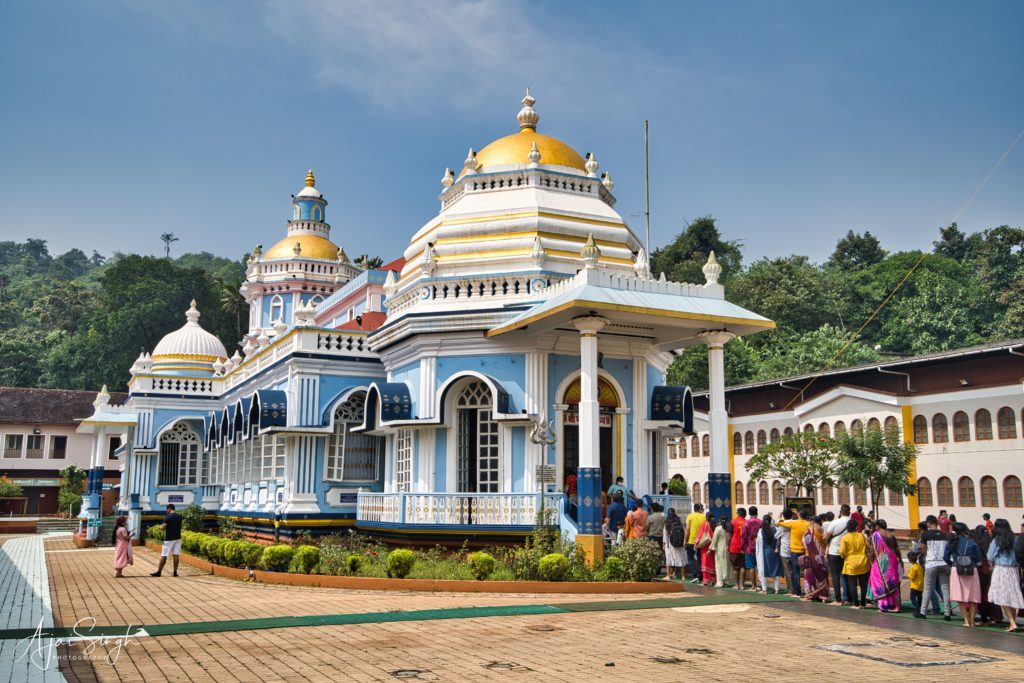
Considerable changes were also incorporated in the superstructure of the temple. In the place of Dravida, Nagara and Vesara sikaharas, a domical sikahara with octagonal base and sloping tiled roofs emerged. A single domical sikahara with octagonal base and topped with a three-fold Kalasa was introduced initially. Later, double octagonal bases for domical sikaharas, or double sikaharas with double octagonal bases (like two-tired sikaharas), with three-fold kalasa on top, and with slanty sloping roofs for mandapas were introduced. This type of temple tower would develop to the impressive double-storeyed tower of Shantadurga temple built in 1738.
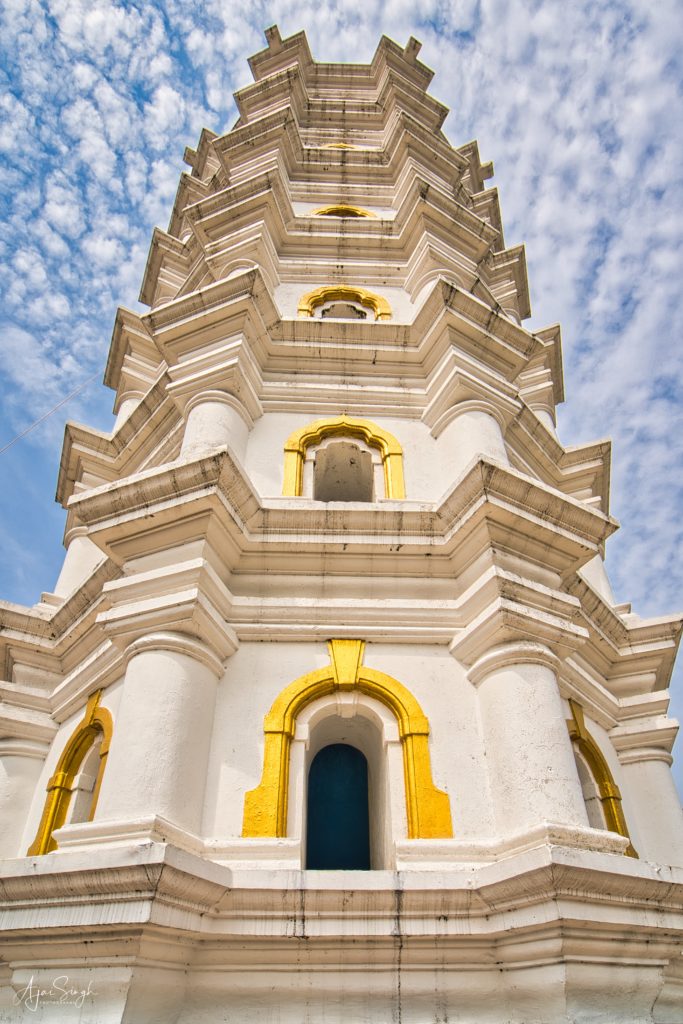
The introduction of a deepasthambha or dipmala is also significant, a feature which hardly exists elsewhere. The tower is an octagonal turret, raised in front of the temple, five to seven storeys high, each storey articulated with dwarf columns at the corners, in between which piercing the side of the turret are niches for lamps. The Marathas had introduced the concept of a separate tower of light, but Goan architects adopted it with their own unique designs based on Christian Baroque elements. However, it is interesting to note that most of these elaborate deepasthambhas are never lit with lamps. The reason being that since many temples are ‘refugee’ temples, which originally existed at another location, lights are only lit at the original kshetram.
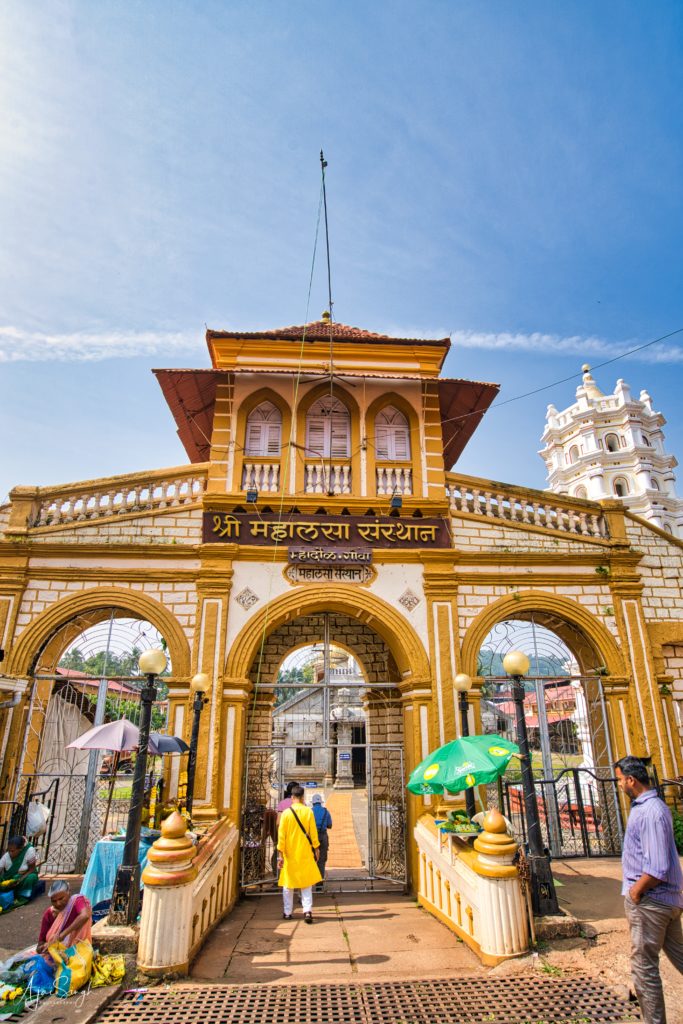
Another typical Goan design is the Naubat Khana or the Drum Tower, usually situated above and as a part of the main entrance. It is generally a two-storeyed structure associated with Muslim rather than Hindu architecture. The upper chamber is for the musicians or the drum beaters as the name suggests.
Another unique practice followed in Goa is that the “refugee” deities “visit” their original kshetram annually. This ceremony is carried out with great pomp, when the vigrahas are taken ‘home’.
Significance of Ponda
The Taluka of Ponda has been a witness to many religious upheavals that have taken place in Goa. The erstwhile Antruz Mahal enjoys the distinction of having sustained Sanatana Dharma which was sought to be eradicated by the Portuguese by offering an abode for the “refugee” gods and goddesses. Perhaps this fact makes the Mahal, the anant urja desh or a region of high spiritual energy. This was because of the security that the area provided from Portuguese destruction due to its location, surrounded by rivers, and being outside their direct control. The history of these temples has been accompanied with the migration of a large section of people in search of a safe destination for their gods and goddesses. They voluntarily sacrificed their homes and livelihood to ensure the safety of their deities.

The Goa Inquisition
Accompanying the systematic destruction of the temples, was the launching of the Inquisition in Goa, which became the most severe and cruel of all the Portuguese territories, and the longest in world history. Francis Xavier was sent to Portugal in 1541 as a missionary for converting Hindus. In 1545 he wrote to the Vatican asking for the Inquisition to be installed immediately. The request was initially turned down, but he persisted. Xavier did not live to see his wish fulfilled, but in the year 1560 the first inquisitors Aleixo Dias Falcão and Francisco Marques, secular canonists, established the Inquisition in Goa. It lasted until the year 1812, that is, a span of 252 years. This Inquisition was abolished in 1812 – during the interlude when the British were occupying Goa – and the inquisition records, which were kept in Goa were sent to Lisbon. Whether the records are still available is a question mark. The Palace of the Inquisition was locally called as Orlem Goro or Big House and it had two hundred cells. It was the palace-cum-fortress built by the last Muslim ruler of Goa, Yusuf Adil Shah of Bijapur in 1500 and is Panaji´s oldest surviving colonial building. After 1961, when Goa was liberated from the Portuguese, it was converted to function as the Secretariat. The palace itself was built after destroying a temple on the site, using its broken remnants.
“The palace of the Inquisition, called by the Portuguese Santa Casa, or the Holy House, is situated on one side of the great square, opposite the cathedral dedicated to Saint Catherine. It is extensive and magnificent, in the front are three entrances, of which, the centre is the largest, and opens upon the grand staircase ascending to the hall which I have mentioned. The two other portals severally lead to the apartments of the Inquisitors which are sufficiently commodious for considerable establishments. Within, are various apartments for the officers of the house, and passing through the interior, there is a vast edifice divided into distinct masses or squares of buildings, of two stories each, separated by small courts. In each story is a gallery, resembling a dormitory, containing seven or eight small chambers, ten feet square, the whole number of which, is about two hundred. In one of these dormitories, the cells are dark being without windows, and smaller and lower than the rest.“

Alexandre Herculano, a famous writer of the 19th century mentioned in his ‘Fragment about the Inquisition’: ‘…The terrors inflicted on pregnant women made them abort….Neither the beauty or decorousness of the flower of youth, nor the old age, so worthy of compassion in a woman, exempted the weaker sex from the brutal ferocity of the supposed defenders of the religion….’
‘…There were days when seven or eight were submitted to torture. These scenes were reserved for the inquisitors after dinner. It was a post-prandial entertainment. Many a time during those acts, the inquisitors compared notes in the appreciation of the beauty of the human form. While the unlucky damsel twisted in the intolerable pains of torture, or fainted in the intensity of the agony, one inquisitor applauded the angelic touches of her face, another the brightness of her eyes, another, the voluptuous contours of her breast, another the shape of her hands. In this conjuncture, men of blood transformed themselves into real artists !!’

What is not commonly known, was that the inquisition was mostly directed against the neo-converts. Due to pressure from the Portuguese authorities and missionaries, and in order to retain their status in society and property, many Hindus converted. However, in private they continued with their Hindu religious practices. To crack down on this, the inquisition started by targeting the neo-converts to ensure that they completely gave up Hindu practices. Thus the edicts banned keeping murtis or religious texts at home, or even having the tulsi (Holy Basil) plant. Neighbours and friends were encouraged to report on anyone disobeying the orders. To incentivise this, those who reported against anyone, received the property of that person! The omnipotence of the Inquisition can be gauged by reading the Edict of 14th April 1736, through which amongst other things, 42 Hindu practices and rituals were banned.
There are no official records of the Inquisition and hence no count exists of the numbers who suffered torture and death during the two and half centuries the horrors lasted. Few authentic accounts are available either. One of them is The Goa Inquisition: A Quatercentenary Commemoration Study of the Inquisition in Goa by Anant Kakba Priolkar.
Conclusion.
Surprisingly, and contrary to popular perception, Goa is probably the only state which has been able to recover some of its lost heritage. This is the result of the sacrifices made by Brahmins over centuries to protect their heritage and culture, often at the cost of their own lives. The temple has re-emerged as the centre of the community and is a vibrant institution involving the masses. Nearly every village has a temple, none of which are under government control. Functions and festivals are celebrated with enthusiasm. The population of Hindus in 1961 at the time of liberation from colonial rule was 60.8%, which has grown to 66.09% (2011 Census). Truly, the unconquerable soul of Bharatvarsha still resides in Goa, which has become the flagbearer of regeneration and civilisational survival. However, Goa is also a sad reflection of how we showcase our history, and the way the official narrative continues to eulogise the colonial period. Even the displays in the government ASI Museum in Old Goa continues with the colonial narrative. There is hardly any reference to the darkest period of the 252 year-long inquisition! Hiding Goa’s, and of those who gave up their lives, stories’ of horror makes a mockery of their sacrifice. Even the liberation of Goa in 1961 is referred to as “annexation”, rather than “liberation”. We need to portray our past to bring out the truth, not hide or twist it.

To read more details about the history of Goa, see the author’s blog at: https://collectingmoments.in/the-hidden-jewels-of-goa-goa-beyond-beaches-part-i-history/
References
- Portuguese Goa https://www.worldhistory.org/Portuguese_Goa/
- Goa https://en.wikipedia.org/wiki/Goa
- The Portuguese Inquisition in Goa: A Brief History http://indiafacts.org/the-portuguese-inquisition-in-goa-a-brief-history/
- Goa History: Ancient & Pre-Colonial Period https://www.travel-india-goa-guide.com/goa_history.html
- History of Goa: Goa & Its Portuguese Colonial Period https://www.travel-india-goa-guide.com/history_of_goa.html
- Rock Art in Goa https://www.goa.gov.in/places/rock-art/
- Usgalimal Rock Engravings https://en.wikipedia.org/wiki/Usgalimal_rock_engravings
- Early History of Goa https://www.goaholidayhomes.com/information/early-history-of-goa.html
- Goa https://www.encyclopedia.com/places/asia/indian-political-geography/goa#:~:text=By%20the%20end%20of%20Portuguese%20rule%20in%201961%2C,of%20Portuguese%20power%20from%20the%20late%20sixteenth%20century.
- Rise in Hindu, Muslim, Jain, Buddhist, Sikh Population https://timesofindia.indiatimes.com/city/goa/Rise-in-Hindu-Muslim-Jain-Buddhist-Sikh-population/articleshow/48688387.cms#:~:text=In%20Goa%2C%20after%20Mormugao%2C%20Margao%20and%20Panaji%20have,after%20Sancoale%20to%20have%20the%20biggest%20Hindu%20population.
- Temples of Goa: An Architectural Study http://hdl.handle.net/10603/35652
- Ponda: A History of Temples http://hdl.handle.net/10603/273031
- Archaeology of Goa: An Early Period http://hdl.handle.net/10603/105017
- Goa Inquisition: Being A Quatercentenary Commemoration Study of the Inquisition in Goa by Anant Kakba Priolkar https://archive.org/details/GoaInquisitionAnantKakbaPriolkar_201806/page/n97/mode/2up
- Goa Inquisition https://www.gnanisworld.com/2021/02/goa-inquisition-fake-narrations-facts-christian-conversion.html
Goa Inquisition: Portuguese Massacre of Innocent Hindus and Destruction of Temples https://www.myindiamyglory.com/2017/12/29/goa-inquisition-portugese-massacre-of-innocent-hindus-and-destruction-of-temples/
Center for Indic Studies is now on Telegram. For regular updates on Indic Varta, Indic Talks and Indic Courses at CIS, please subscribe to our telegram channel !
- 39 min read
- 0
- 0








